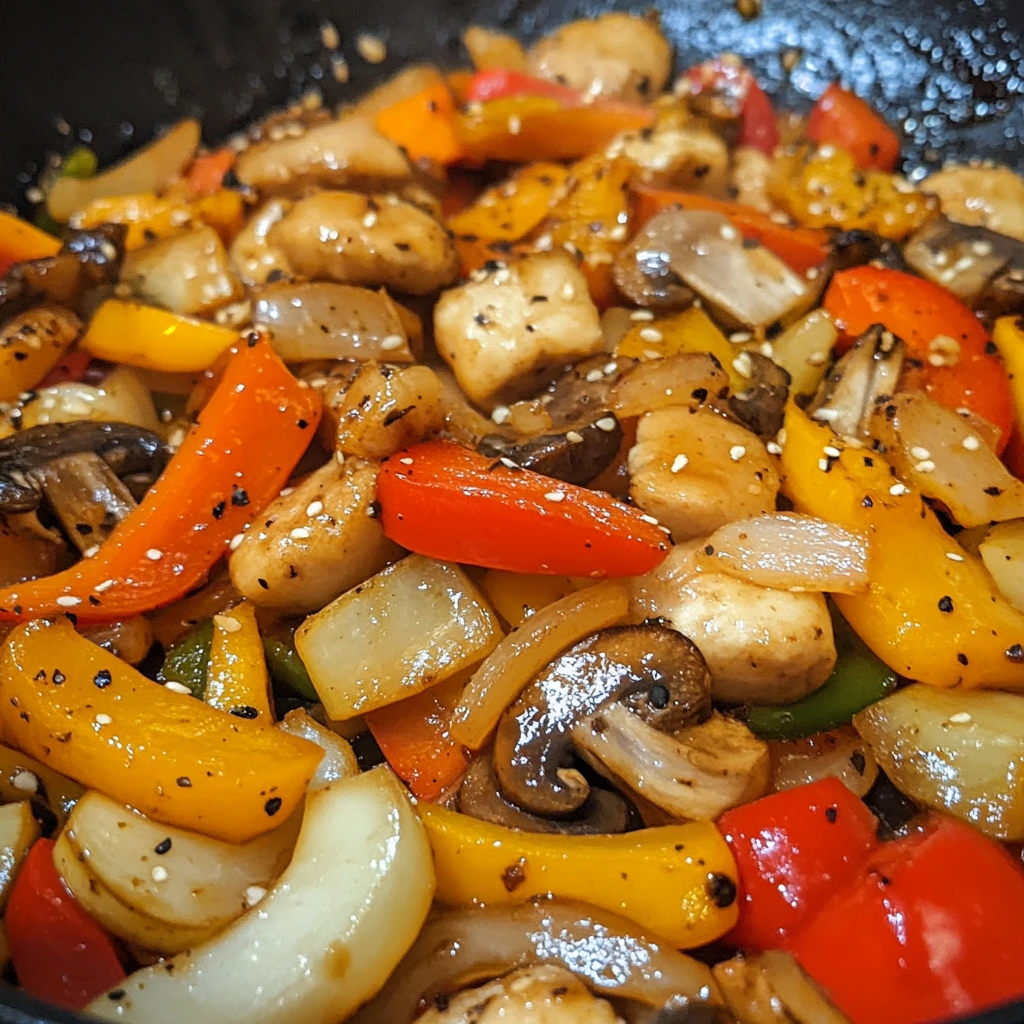Vegetable Stir Fry is the perfect dish for a quick, healthy meal that bursts with vibrant flavors. Packed with colorful vegetables, this recipe is easily customizable to suit your preferences. Whether you’re looking for a vegan option or simply want to use up what’s in your fridge, Stir Fry is a great choice. The combination of fresh ingredients, bold seasonings, and simple cooking methods makes it ideal for busy weeknights. Get ready to brighten your day with this easy, nutritious stir fry that can be prepared in minutes!
The Key Ingredients for the Best Vegetable Stir Fry
Vegetables
The vegetables you choose can make or break your Vegetable Stir Fry. Colorful, crunchy veggies add both flavor and texture. Common options include bell peppers, broccoli, carrots, zucchini, and snow peas. These vegetables cook quickly and retain their nutrients. You can also experiment with mushrooms, cabbage, and baby corn for more variety.
To maintain crispness, cut your vegetables into similar-sized pieces. This ensures even cooking. Don’t hesitate to add leafy greens like spinach or bok choy for extra vitamins. Stir-fried vegetables should remain bright and fresh. Avoid overcooking, as it can reduce their crunch and nutrients.
Feel free to mix and match according to your taste and what’s in season. The key is to use a variety of vegetables for a colorful, nutritious, and delicious dish!

Sauces & Seasonings
Sauces and seasonings are crucial for adding depth to your Vegetable Stir Fry. Soy sauce is a classic choice, giving a savory umami flavor. You can also use tamari for a gluten-free option. Sesame oil brings a nutty richness, while garlic and ginger add a fragrant kick.
For extra heat, consider adding chili flakes or sriracha. A dash of rice vinegar can provide a touch of acidity that balances the dish. If you like sweetness, hoisin sauce or a drizzle of honey works wonders.
Feel free to experiment with different combinations based on your preferences. Just remember to adjust the amounts as you go. Too much soy sauce can overpower the flavors, while too little can leave the Stir Fry bland. The key is balancing salty, sweet, sour, and spicy elements for a harmonious taste.
Optional Add-ins to Vegetable Stir Fry
Optional add-ins allow you to customize your Vegetable Stir Fry and make it more filling. Tofu is a popular choice for a plant-based protein. You can also try tempeh or seitan for added texture. If you prefer meat, chicken, beef, or shrimp work well with stir-fried vegetables.
For a heartier meal, consider adding cooked noodles or rice. They soak up the flavorful sauce, making each bite even more satisfying. You can use brown rice or quinoa for a healthier twist.
Other options include nuts like cashews or almonds for a crunchy texture, or even a sprinkle of sesame seeds for extra flavor. Adding fresh herbs like cilantro or green onions just before serving enhances the dish with a burst of freshness.
Feel free to mix and match these add-ins to suit your preferences and dietary needs!
Step-by-Step Guide to Making a Quick & Easy Stir Fry
Prep Your Vegetables
Proper vegetable prep is key to a successful Stir Fry. Start by washing all your vegetables thoroughly to remove any dirt or pesticides. After that, cut them into uniform pieces to ensure even cooking. For example, slice bell peppers into strips and chop broccoli into bite-sized florets.
It’s important to consider the cooking time of each vegetable. Harder vegetables like carrots and broccoli should be cut smaller to cook quickly. Softer ones, like zucchini and mushrooms, can be left a bit larger.
Organizing your vegetables by type can help streamline the cooking process. Place them in separate bowls based on how long they’ll take to cook. This way, you can add them to the pan in stages for a perfect Vegetable Stir Fry. Prepping your vegetables properly also helps preserve their crunch and nutritional value.
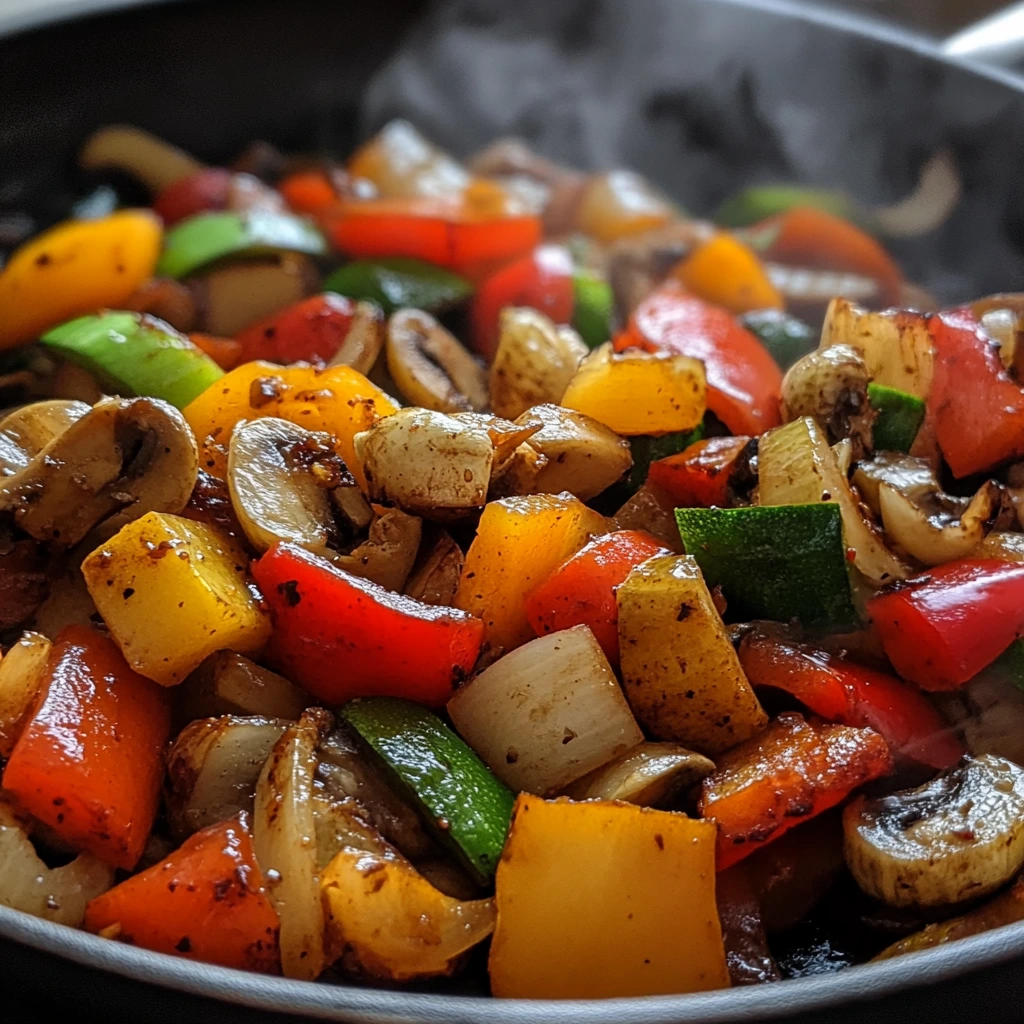
Stir Frying Technique
Stir frying is all about high heat and quick cooking. Start by heating your pan or wok over medium-high heat. Once hot, add a small amount of oil, like sesame or vegetable oil. The oil should shimmer but not smoke.
Next, add your hardest vegetables first, such as carrots or broccoli, since they take longer to cook. Stir them constantly to avoid burning. After a minute or two, add the softer vegetables, like bell peppers and zucchini. Keep stirring to ensure even cooking.
Don’t overcrowd the pan. If needed, cook in batches to maintain high heat. Stir-frying works best when the vegetables remain crisp and bright, not soggy. Once the vegetables are tender-crisp, add your sauces and seasonings. Continue stirring to evenly coat the vegetables and infuse the flavors. Finally, remove from heat as soon as the vegetables are cooked but still vibrant.
Assembly & Serving Vegetable Stir Fry
Once your vegetables are stir-fried to perfection, it’s time to assemble your dish. If you’ve added noodles or rice, make sure they’re cooked and ready to go. You can either toss the noodles or rice directly into the stir fry pan or serve them on the side.
For serving, place a generous portion of the stir-fried vegetables over your rice or noodles. Drizzle any leftover sauce from the pan over the top for extra flavor. Garnish with fresh herbs, like cilantro or green onions, for a pop of color and freshness.
If you’ve added nuts or seeds, sprinkle them on top for crunch. A squeeze of lime or lemon juice just before serving can brighten the dish. Serve your Vegetable Stir Fry immediately while it’s hot and enjoy the vibrant, delicious flavors!
Tips for Perfecting Your Vegetable Stir Fry Every Time
Choosing the Right Pan
Choosing the right pan is essential for a perfect Vegetable Stir Fry. A wok is the traditional choice, designed for high-heat cooking. Its sloped sides allow you to stir and toss ingredients easily. If you don’t have a wok, a large, heavy skillet will work well too.
The key is to use a pan that distributes heat evenly. A non-stick pan can help prevent sticking, but cast-iron or stainless steel works great if seasoned properly. Ensure your pan is large enough to hold all the ingredients without overcrowding. Overcrowding can cause the vegetables to steam instead of stir-fry.
Preheat the pan before adding oil. This ensures the vegetables cook quickly and retain their texture. A well-heated pan also prevents burning and helps you achieve that signature crispy, caramelized edge on the veggies. Choose a pan that fits your cooking style and ensures even, quick cooking.
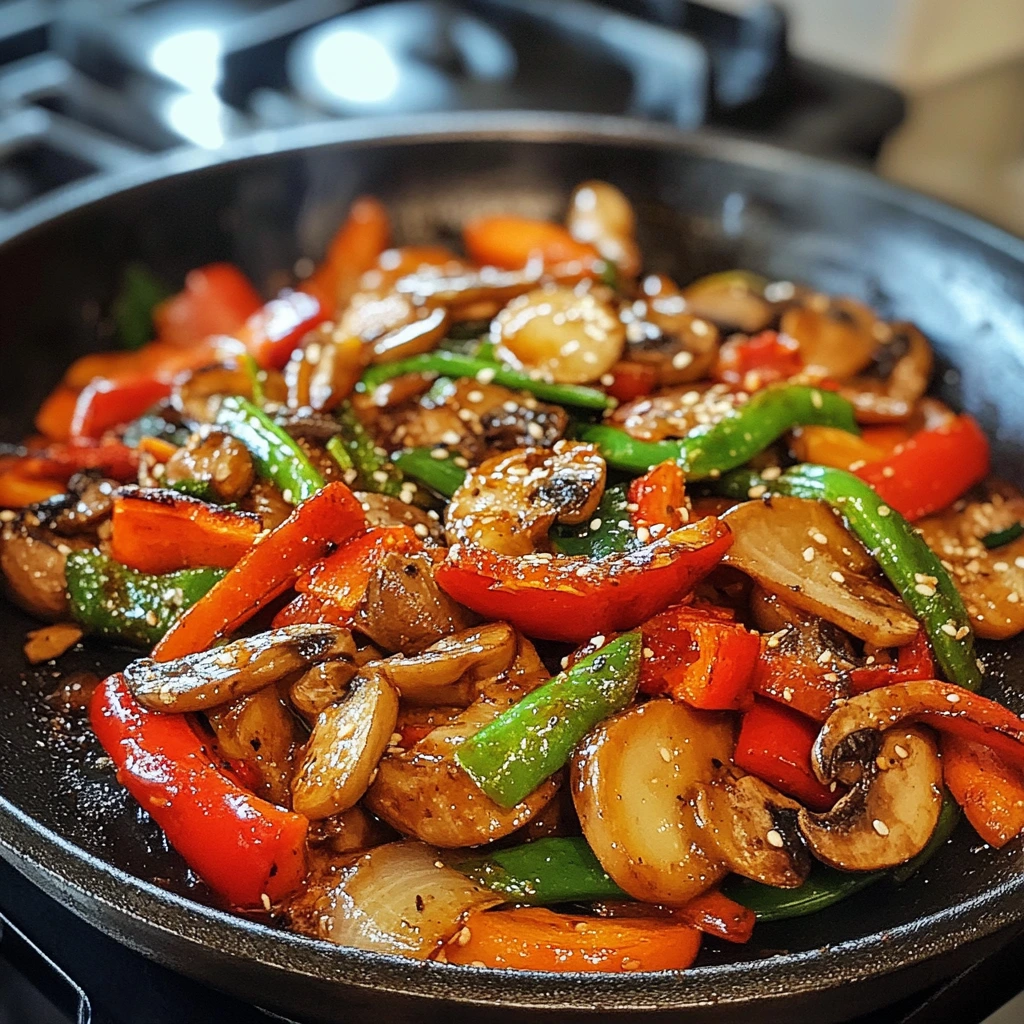
Cooking Time
Cooking time is crucial for achieving the perfect Vegetable Stir Fry. Stir frying is a quick process that typically takes 5-7 minutes. Start by cooking the harder vegetables, like carrots and broccoli, for 2-3 minutes. This ensures they soften without losing their crunch.
Next, add the softer vegetables, such as bell peppers and zucchini. These cook faster, usually in 1-2 minutes. Keep stirring constantly to avoid burning and to ensure even cooking.
The goal is to keep the vegetables tender-crisp, not overcooked and mushy. To test doneness, try a piece of each vegetable. It should be tender yet firm. If you’re adding protein, like tofu or chicken, make sure it’s cooked through before serving.
Remember, stir fry is all about speed, so don’t let the pan sit too long on the heat.
Vegetable Stir Fry Flavor Balance
Achieving the right flavor balance is key to a delicious Stir Fry. A good Vegetable Stir Fry should have a mix of salty, sweet, sour, and spicy elements. Start with soy sauce or tamari for saltiness and umami. Adjust the amount to avoid overpowering the other flavors.
To add sweetness, consider a touch of honey or hoisin sauce. This balances the saltiness and adds depth. For acidity, a dash of rice vinegar or lime juice brightens the dish. A little acid helps cut through the richness of the sauce.
For heat, add chili flakes, sriracha, or fresh ginger. Be mindful of the amount to avoid overwhelming the other flavors. Taste and adjust the seasoning as you go. Adding small amounts at a time helps ensure the flavors harmonize. The perfect Stir Fry should have a well-rounded taste with no one flavor dominating the others.
Nutritional Benefits of Vegetable Stir Fry
Packed with Nutrients
A Vegetable Stir Fry is not only delicious but also packed with essential nutrients. Fresh vegetables are rich in vitamins, minerals, and antioxidants, making them a healthy choice for any meal. For example, broccoli is high in vitamin C, while bell peppers are packed with beta-carotene.
By using a variety of colorful vegetables, you get a wide range of nutrients. Leafy greens like spinach add iron, while carrots provide a good dose of fiber. These vegetables are also low in calories, making the dish great for those watching their intake.
Stir frying preserves many of the nutrients in vegetables, as it cooks them quickly at high heat. The healthy oils used in stir frying, like sesame oil, also provide beneficial fats. Overall, a Vegetable Stir Fry offers a nutrient-dense meal that supports a balanced, healthy diet.
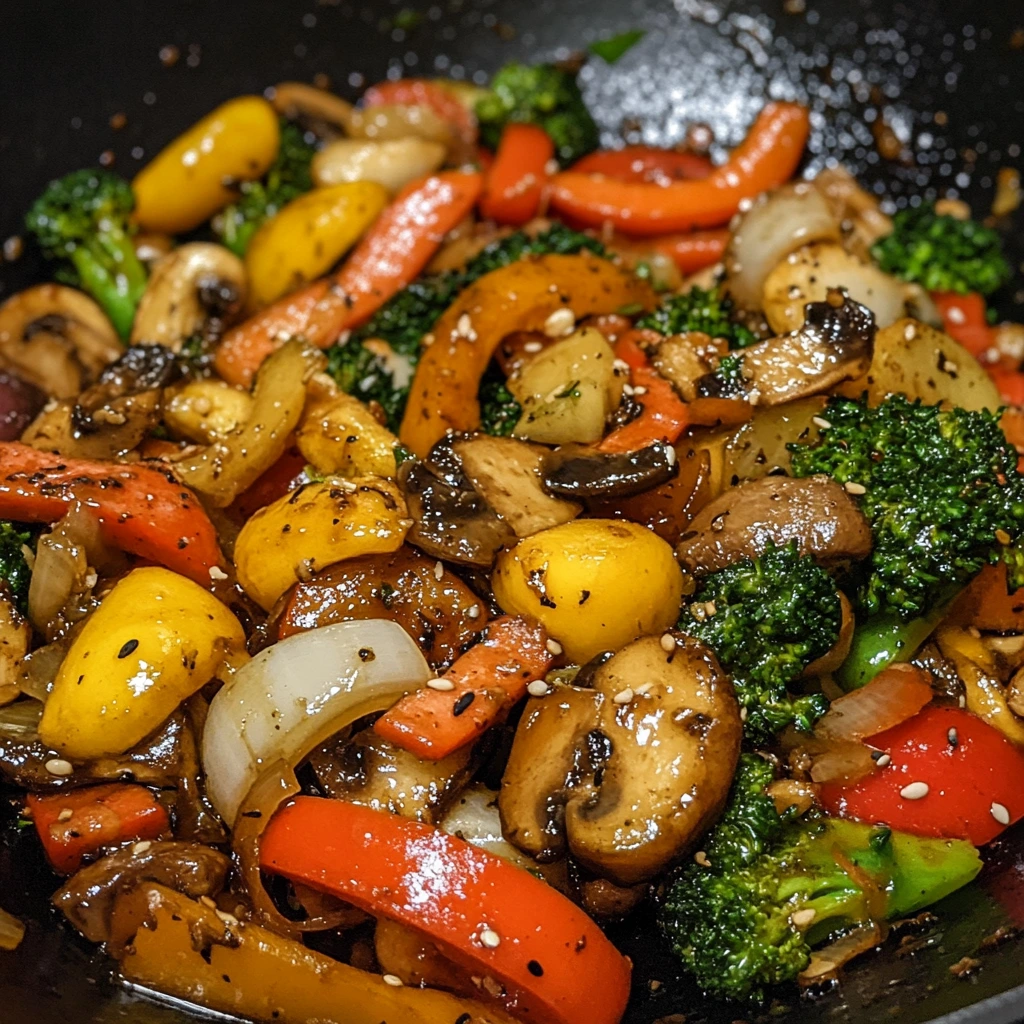
Customizable to Any Diet
One of the best things about Vegetable Stir Fry is how easily it can be customized to fit any diet. If you’re following a vegan or plant-based diet, simply skip animal products and focus on vegetables, tofu, or tempeh for protein.
For a gluten-free option, use tamari instead of soy sauce and make sure your noodles or rice are gluten-free. Those following a keto or low-carb diet can skip the noodles and rice, focusing on the vegetables and adding a protein like chicken or shrimp.
If you’re looking for a low-calorie meal, just use a light hand with the oils and sauces. The beauty of stir fry is that it can easily adapt to any dietary need without sacrificing flavor. No matter your preferences, this dish is a flexible and nutritious choice for everyone!
Quick & Healthy Vegetable Stir Fry
A Vegetable Stir Fry is both quick and healthy, making it the perfect choice for busy weeknights. The entire dish can be ready in under 30 minutes, making it an ideal option when you’re short on time. Stir frying cooks vegetables quickly at high heat, preserving their nutrients and crisp texture.
This dish is also low in calories and packed with vitamins, making it a nutritious choice. The variety of fresh vegetables offers a range of health benefits, from boosting immunity to promoting good digestion.
Using healthy oils like sesame oil provides beneficial fats without overwhelming the dish. Additionally, stir frying allows you to control the ingredients, ensuring a wholesome meal without excess sugar or preservatives. For a quick and wholesome dinner, a vegetable stir fry is hard to beat.
Creative Variations of Vegetable Stir Fry
Adding Protein
Adding protein to your Vegetable Stir Fry makes it a more complete meal. Tofu is a popular plant-based option, absorbing the flavors of the sauce while providing a good amount of protein. If you prefer a meat option, chicken, beef, or shrimp are great choices that cook quickly in the stir fry.
For a more hearty dish, try adding tempeh, which is made from fermented soybeans and offers a slightly nutty flavor. Another option is seitan, which has a chewy texture similar to meat.
If you’re looking for extra flavor, marinate the protein before adding it to the stir fry. This allows the flavors to infuse the protein, making it even more delicious. Whether you choose plant-based or animal protein, adding it to your stir fry ensures a well-rounded, satisfying meal that’s rich in both flavor and nutrients.
Vegetable Stir Fry flavor Tweaks
Adding a few flavor tweaks can elevate your Vegetable Stir Fry. If you want a sweeter profile, try adding a spoonful of hoisin sauce or a drizzle of honey. This balances the savory elements and adds depth.
For a tangy twist, a splash of rice vinegar or lime juice works wonders. It cuts through the richness of the dish and brightens the overall flavor.
If you enjoy heat, consider adding chili flakes, sriracha, or fresh ginger. These ingredients can bring a spicy kick without overpowering the other flavors.
For a unique flavor, try adding a spoonful of peanut butter or almond butter. It gives the stir fry a creamy texture and a mild, nutty taste. Don’t be afraid to experiment with different seasonings to find the perfect balance that suits your taste. Small tweaks can make your stir fry truly stand out!
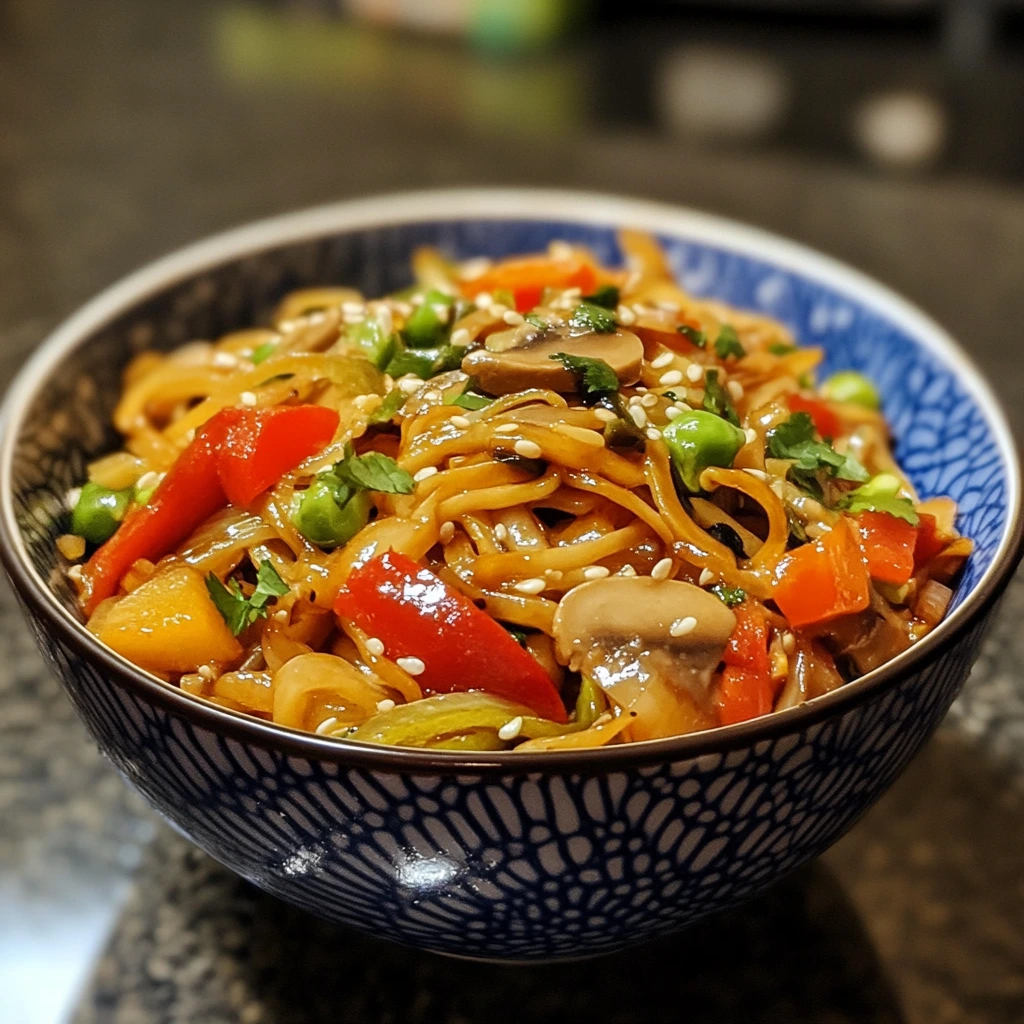
Meal Prep Tips
Vegetable Stir Fry is perfect for meal prepping. To save time, chop your vegetables in advance and store them in airtight containers. This makes it easy to throw together a stir fry on busy days.
If you plan to add rice or noodles, cook them ahead of time and refrigerate them. They store well for a few days and can be reheated quickly.
For added convenience, prepare the stir fry sauce in bulk. Store it in a jar or bottle in the fridge for easy access throughout the week.
When reheating, add a little water or extra sauce to keep the stir fry moist. To prevent sogginess, avoid overcooking the vegetables during the initial prep. You can also freeze portions of stir fry for later use, making it a great freezer-friendly meal.
Conclusion
In conclusion, Vegetable Stir Fry is a quick, healthy, and customizable meal that fits any diet. With the right vegetables, sauces, and seasonings, it’s easy to create a delicious dish bursting with flavor.
Whether you’re adding protein, experimenting with spices, or prepping for the week ahead, stir fry is both versatile and satisfying. It’s the perfect choice for busy nights when you need a nutritious meal in minutes. Try out different combinations and make it your own!

